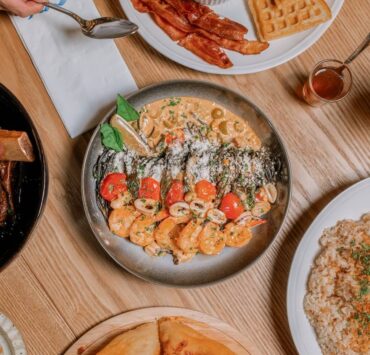Hiro Makino x Bruce Ricketts: 2025’s very first culinary collaboration
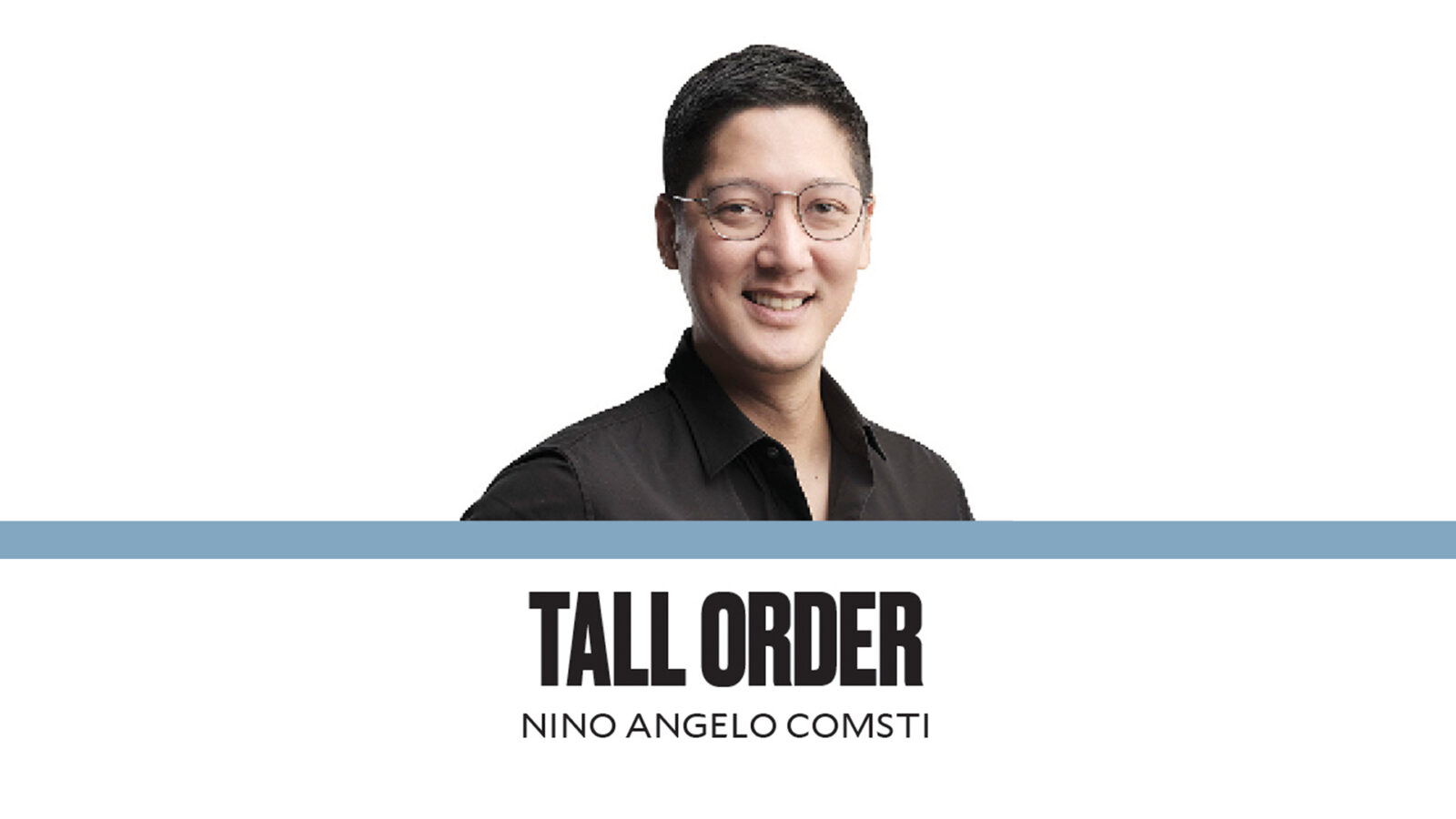
Chef Hiro Makino of Michelin-starred Makinoncî restaurant in Kanazawa, Japan has always been curious about the Philippines. And it’s mostly because of his language tutors.
“Since my restaurant attracts many international travelers and foodies, I realized I needed to learn to speak English. So in April last year, I started taking online lessons twice a week with Filipino teachers,” he says.
Another reason is because he met the Rickettses, the couple behind restaurant Iai. “Bruce and I are more than best friends. We’re like brothers,” he adds. That’s why when Makino-san planned a family vacation trip to Palawan at the end of 2024, he made sure not just to drop by Manila and visit him and wife Jae, but even better, to organize a collaboration with them.
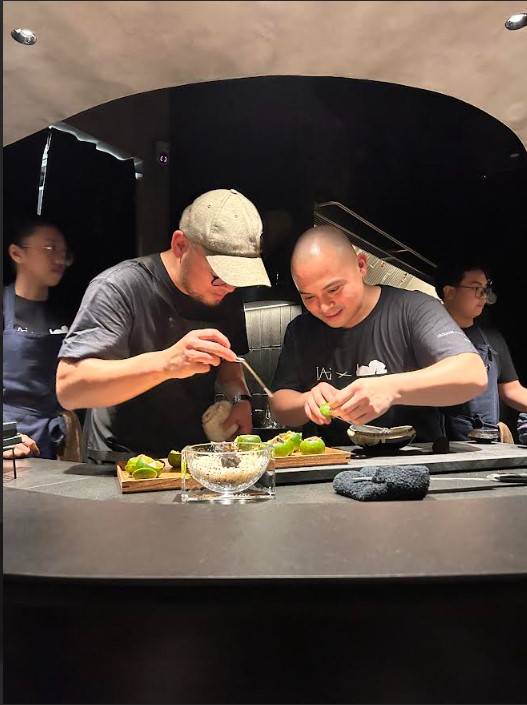
In preparation for their one-night-only dinner held Jan. 1, the chefs visited the respective food markets of their home countries and pooled the items they wanted to cook with.
“It started with the ingredients that we wanted to feature from Kanazawa and his region, Ishikawa, as well as a conversation about what I love working with that he also enjoys using, like pigeon, duck, and buri,” says Bruce. “The ingredients we flew in were Japanese truffles, pigeon, Ikeda wagyu, kobakogani (female snow crab), zuwaigani (snow crab), himi buri (Japanese amberjack), and homemade karasumi (a delicacy made from salted and dried mullet roe).”
To refresh his memory and palate, he and Jae even flew to Japan to eat again in Makinoncî to give themselves a better sense of Makino-san’s menu, and drum up inspiration for flavor combinations that would be right up their alleys.
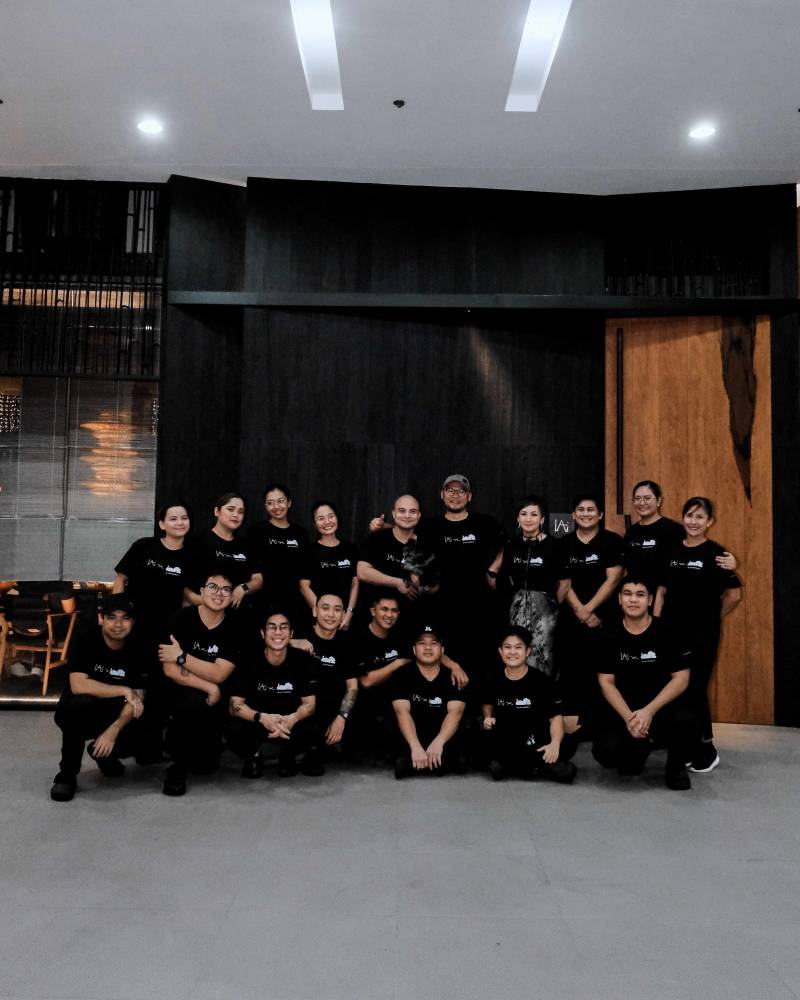
Amazed
“His food is delicious, comforting, not bound by a cuisine, but the Japanese sensibilities are strong. I like that he really studies a product from his town and prefecture and serves it in ways that are fun and puts customers at ease. I found a lot of similarity with my personal style because his cooking is filled with a lot of fun, curiosity, and craftsmanship,” says the Iai chef.
In Manila, they visited Farmers Market in Cubao, which Hiro found to be completely different from the ones in his country as it was pumping with energy and vibrancy. He got amazed by the wide range of fruits and vegetables available, as well as the variety of shrimp. He said he would love to have access to the local blue shrimps back in Japan.
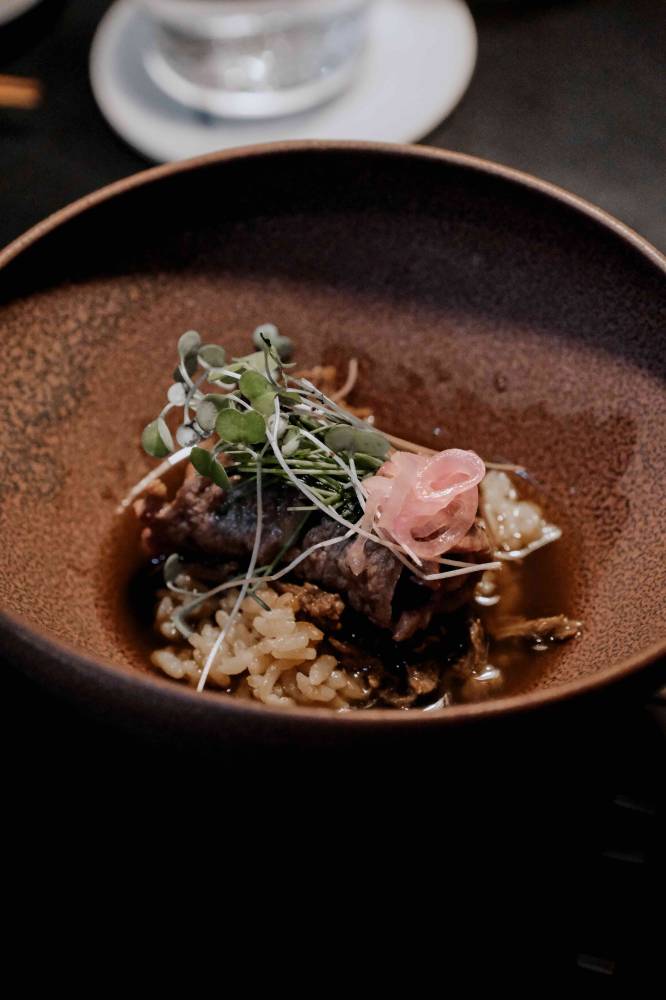
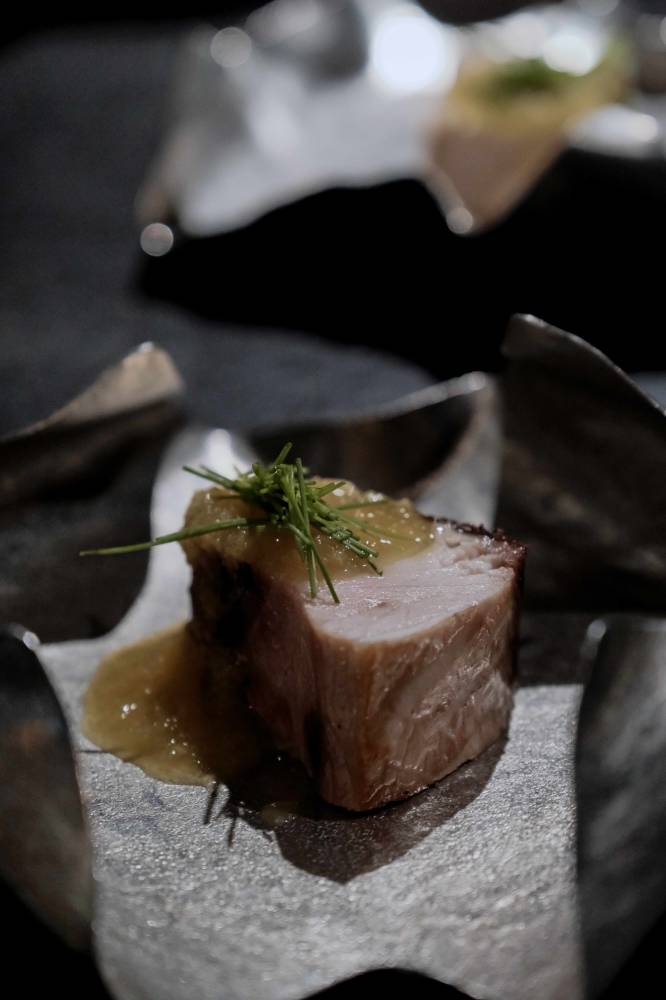
Armed and equipped with an arsenal of quality ingredients as well as inspiration, the two came up with a multi-course menu that featured refreshing flavor combinations. Case in point: the set of appetizers that impressed from the get-go with pomelo, tomato, and fish consommé turned into a granita and pilpil sauce; karasumi with roasted pineapple jam and orange zest; foie gras with banana curd, yuzu, and guava; taro puff composed of coconut meat and squid; and kobakogani in different forms, all served in a single dish.
These were followed by three small bites that tipped the hat to the clean and mild-tasting buri—a raw sushi grilled and topped with pickled papaya, the fatty part cloaked in a vinegar-based ginger-turmeric sauce.
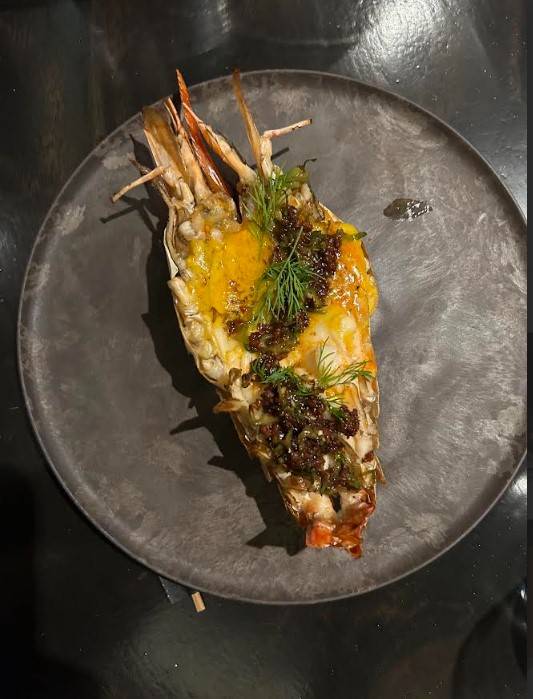
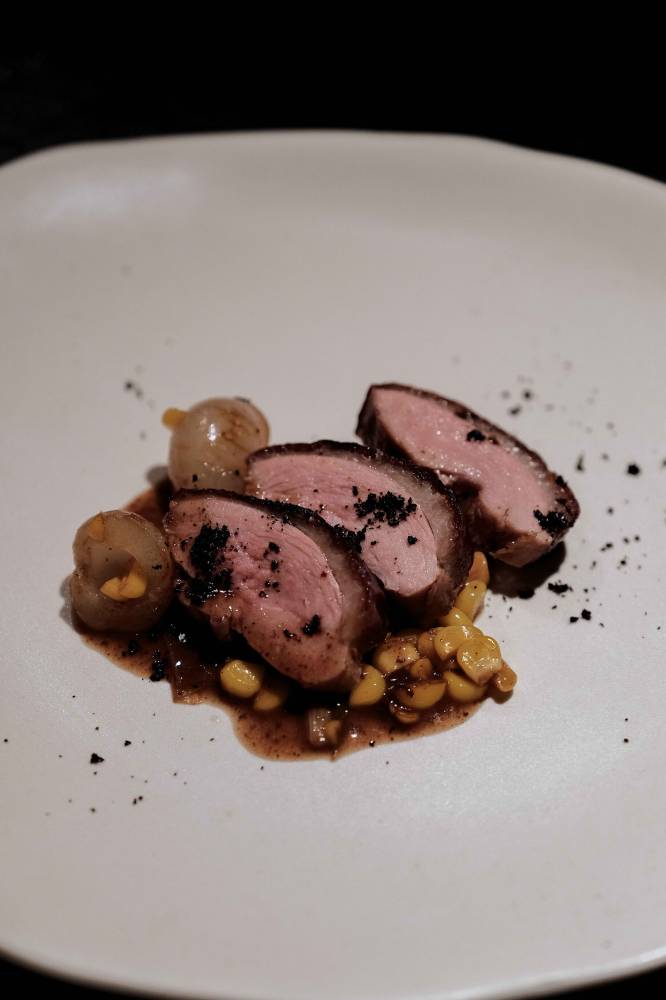
The heavy hitters were the grilled butterflied ulang complemented by stir-fried sigarilyas and XO sauce with latik; roast duck breast with grilled longan, corn, burnt onion powder, and pigeon liver sauce; and Ikeda beef bistek donburi with tiyula itum broth poured tableside.
The meal ended with Japanese sunchoke ice cream, truffle shavings, dalandan jelly, aged persimmon, and sunchoke chips that came nestled in a hollowed-out dalandan.
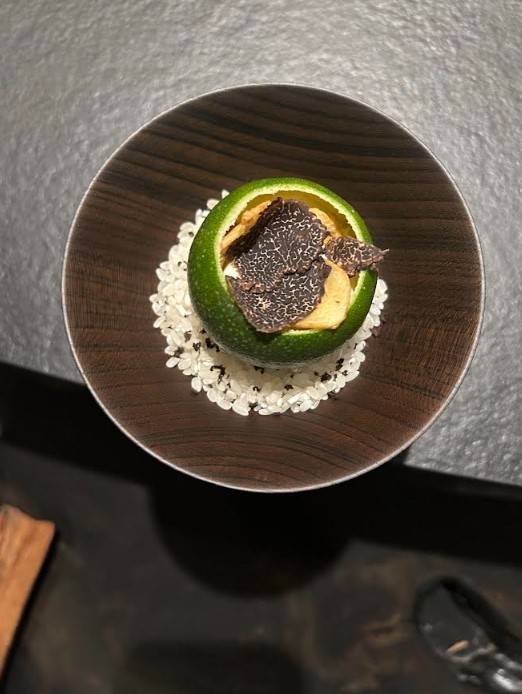
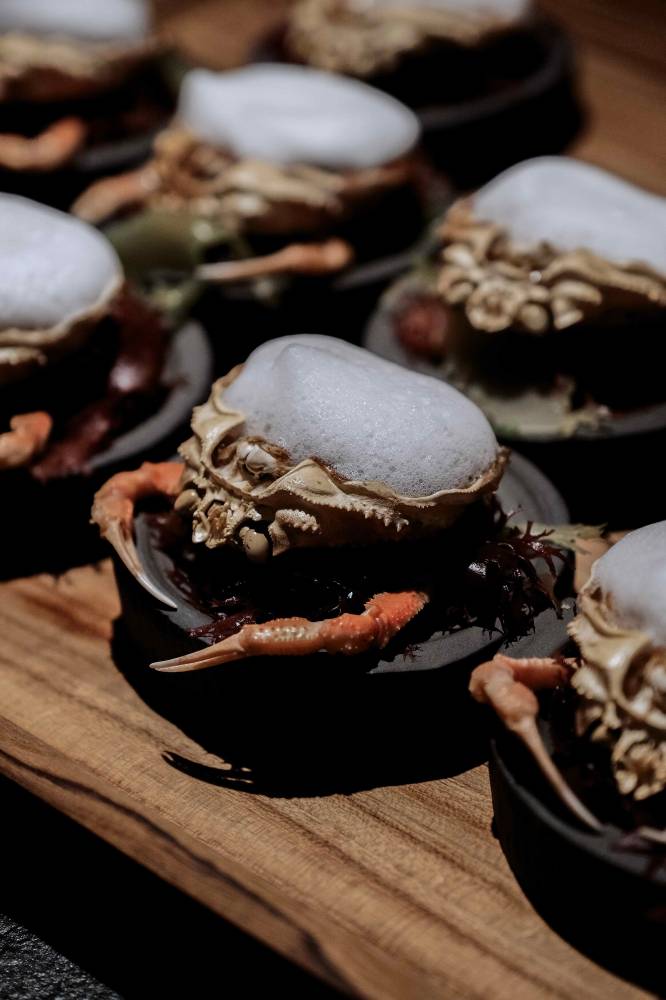
2025 promises to be a monumental time in food for the Philippines, and the very first culinary collaboration of the year couldn’t have kicked things off in a more delicious way.
Follow the author @fooddudeph on Instagram.
Angelo Comsti writes the Inquirer Lifestyle column Tall Order. He was editor of F&B Report magazine.















